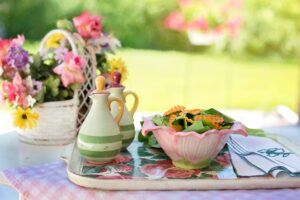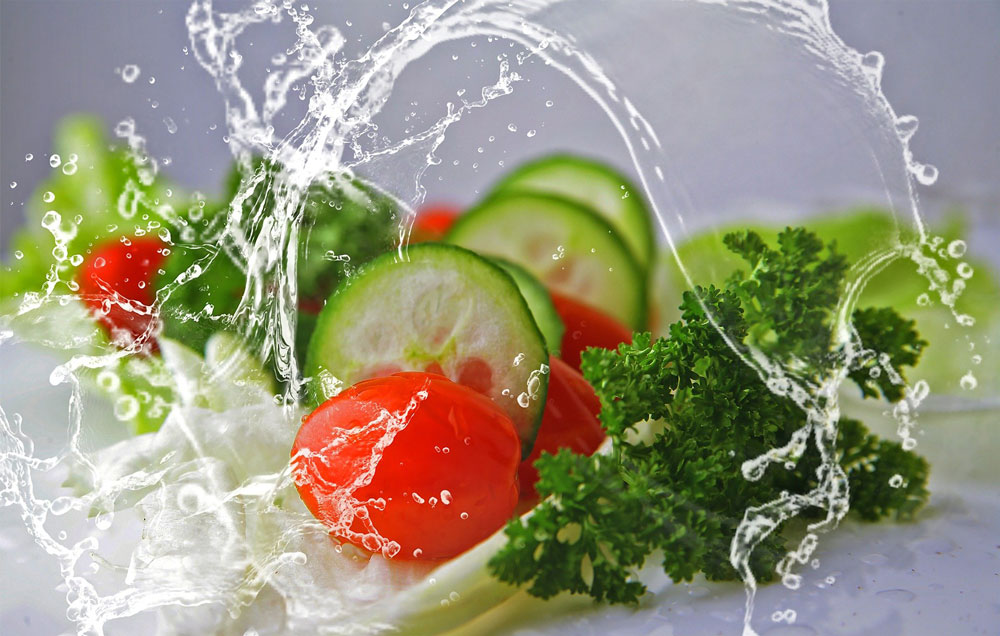When you think about adding more vegetables to your diet through vegetable gardening, it might be at first complicated and a little bit confusing. You are attempting to change your daily dietary habit, which you have probably been following for your entire life.
Making healthy salads is totally a work of art. Salads include a variety of ingredients and can contain many flavors, which contribute to gourmet eating. Salads may also have meat or can be made without meat as well, they can be fluffed up with many things in no time, and seriously speaking, they are considered among the best, most healthy foods.
Choose the option of eating homemade delicious healthy salads.
Homemade healthy salads are much better than those you can get at salad bars, and you can always choose the fresh fruits and vegetables on your own. The homemade salad may be comprised of organic lettuces, eggs, and other salad ingredients. When you are making fruit salad, be careful in buying healthy organic fully-grown fruits. The dressing can become a secondary option when your salad tastes good. You can provide incredible taste to your salad by adding some fresh herbs, spices, and olive oil.
When you have finally decided to switch to a healthier diet, you expose yourself to a world of healthier eating habits.

Suppose you are eating healthy salads as your main course. In that case, you can add a variety of healthy additions to your salads, like nuts, almonds slices, avocados, sunflower seeds, parsley, and grains. You can even add small chicken pieces to your salad as well. Your vegetables and fruits should be well washed and dried, and you can refrigerate them before making your salad. Serve the salad in an attractive salad bowl, which can make your salad more appealing and appetizing.
About Growing Your Own Veggies
Growing veggies can be fun, save you some money and be healthier for you. Here are some of the top vegetables to grow in your newly planted garden.
Beans. Beans love fertile, warm, sandy dirt. Be sure to dig deep and work the ground thoroughly for beans. Don’t plant beans before the earth has warmed from winter. Also, a bit of lime worked in with the dirt is helpful in the cultivation of beans. Bush beans are set in rows about 18 inches apart, while the pole-bean rows should be 3 feet apart. The rows for bush lima beans ought to be farther apart than those for the other dwarf beans. While planting beans, be sure to position the bean in the soil with the eye downward.
Beets. Beets love fertile, sandy loam. Fresh manure worked into the dirt is disastrous for beets, like it is for many other crops. You can, however, dig out a trench approximately a foot deep. You can then disperse a thin layer of manure in this, cover up with soil, and plant higher up than this. Using this strategy, by the time the primary root reaches the manure layer, there will be no harm done.
Brussels sprouts. Brussels sprouts are a prevalent member of the cabbage family. Many individuals who don’t like to serve cabbage will dish up these adorable vegetables because of their size. Brussels sprouts are intriguing in their growth. The plant stem runs upward. Like an umbrella, at the top is a closed head of leaves, but this isn’t what we consume. Shaded by the umbrella and bundled all along the stem are delightful little cabbages or sprouts. Fertile soil is required, and lots of water is needed during the maturation period.
The seed ought to be planted in May, and the little plants transplanted into fertile dirt in late July. The rows should be 18 inches apart, and the plants one foot apart in the rows.
Carrots. Carrots come in two types: those with long roots and those with shorter roots. If long-rooted kinds are selected for your garden, then the dirt must be worked down to a depth of 18 inches. The shorter ones will do well in 8 inches of well-worked sandy soil. Don’t put carrot seed into newly manured ground. As the small seedlings ascend, you’ll discover that they’re much too close together. Thin a bit at a time, so that new, tiny carrots might be grown.
Cucumbers. If you intend to grow cucumbers, follow these instructions: Sow the seed indoors and cover with one inch of fertile soil. In a little area of 6 inches in diameter, plant 6 seeds. Place a bean seed with the sprouting end in the ground. Once your last frost has passed, plant each set of 6 little plants, soil and all, in the garden. The hills ought to be about 4 feet apart on all sides.

